What the box tree moth quarantine means for Michigan homeowners
The box tree moth quarantine has been extended to 12 Michigan counties. Here is what homeowners should know.

The box tree moth (Cydalima perspectalis), originating from Japan, China, Taiwan, Korea, far-east Russia and India, has garnered attention due to its significant impact on boxwood plants here in Michigan. In its native range of Asia, the box tree moth has evolved alongside natural predators, which keep its population balanced. However, its effects have been far from benign in regions where the box tree moth has been inadvertently introduced. The absence of significant natural regulatory mechanisms has allowed the moth to wreak havoc on boxwood plants in Europe and now portions of Ontario and the northeastern and Midwest United States.
Michigan introduction and quarantine
In May 2021, the United States Department of Agriculture (USDA) announced the discovery of box tree moth in the continental U.S. and initiated efforts to control them. Infested boxwood shrub shipments from a nursery reached six states, including Michigan. Through a joint initiative involving Michigan Department of Rural Development (MDARD), USDA, Animal and Plant Health Inspection Service (APHIS) and Michigan State University Extension (MSU Extension), infested plants were destroyed and a monitoring program placed specialized traps across Michigan in 2021-2022. No box tree moths were detected at these sites. However, in November 2022, box tree moths were found at two residences in a new location in Lenawee County.
Following the 2022 detection, MDARD established the first quarantine zone in April 2023 Michigan. Due to new box tree moth detections beyond this original area, the quarantine has expanded and as of Dec. 11, 2023, includes 12 Michigan counties: Clinton, Eaton, Ingham, Livingston, Oakland, Jackson, Washtenaw, Wayne, Lenawee, Monroe, Macomb and St. Clair (Photo 1). The quarantine restricts the sales and movement of boxwood within the quarantine zone.
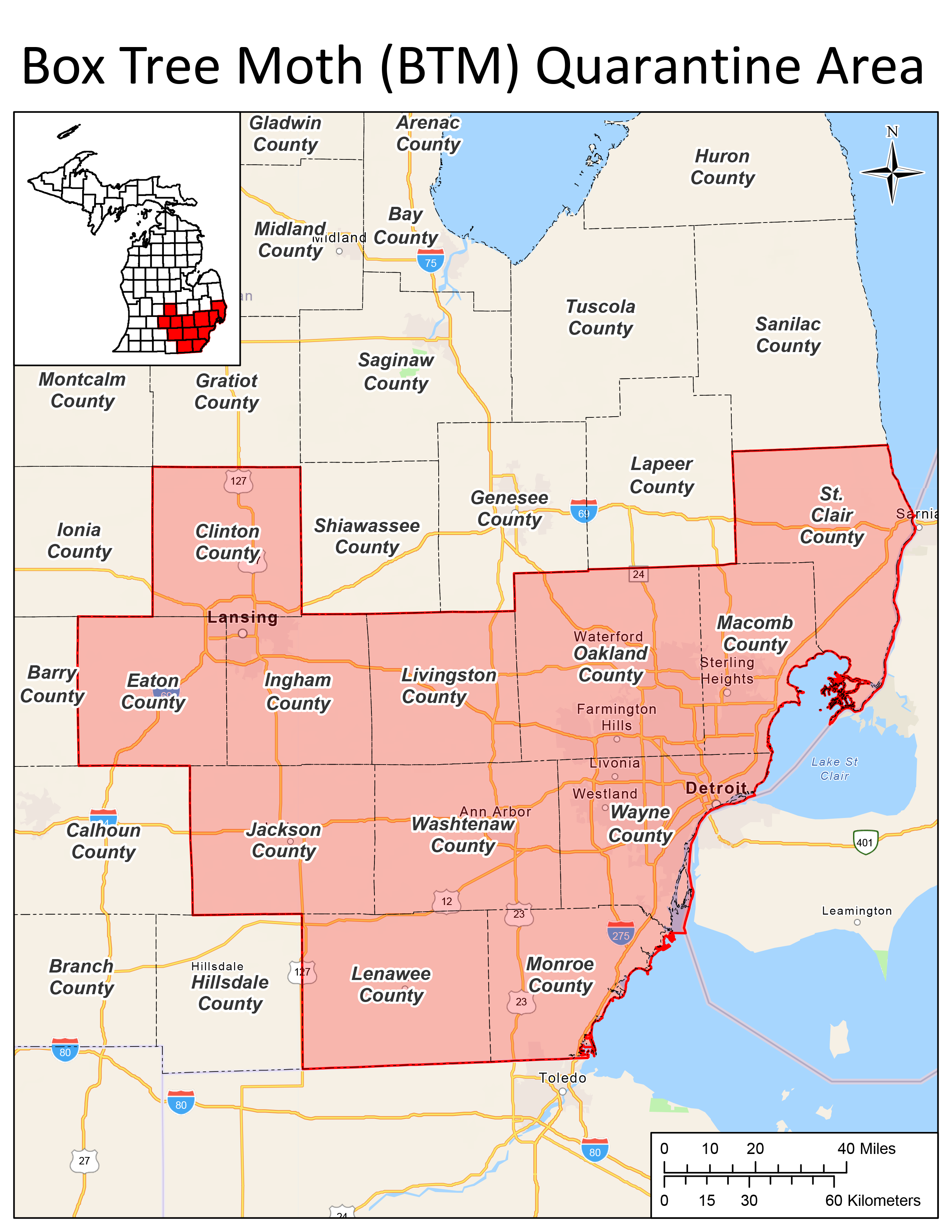
Homeowners should be aware of their location with respect to the quarantine zone. Moving any boxwood material from within the quarantine zone to the outside is strictly prohibited, including potted plants and trimmings. No matter your location, if you have boxwoods in your landscape, MDARD and MSU Extension encourages homeowners to monitor for infestations. Utilizing preventative sprays is a good way to reduce the likelihood of an infestation.
Life cycle
Understanding the life cycle of the box tree moth is crucial for proper identification and effective control in the landscape. While box tree moths are relatively new in Michigan and their complete life cycle in Michigan’s climate is still being studied, we can infer from European data about the expected life cycle here in Michigan.
Box tree moths overwinter in their larval stage, also known as caterpillars. When temperatures warm in the spring, they continue through seven larval stages, which take approximately four weeks before pupating. Pupation takes around one week before they emerge as adult moths. Females can start laying eggs as soon as two days after they begin flying. Eggs hatch after three days, and it takes 40–45 days to complete a single generation, depending on temperature (Photo 2). Multiple life stages may occur simultaneously, depending on environmental conditions. In southern Michigan, box tree moths are expected to have two to three generations per year.
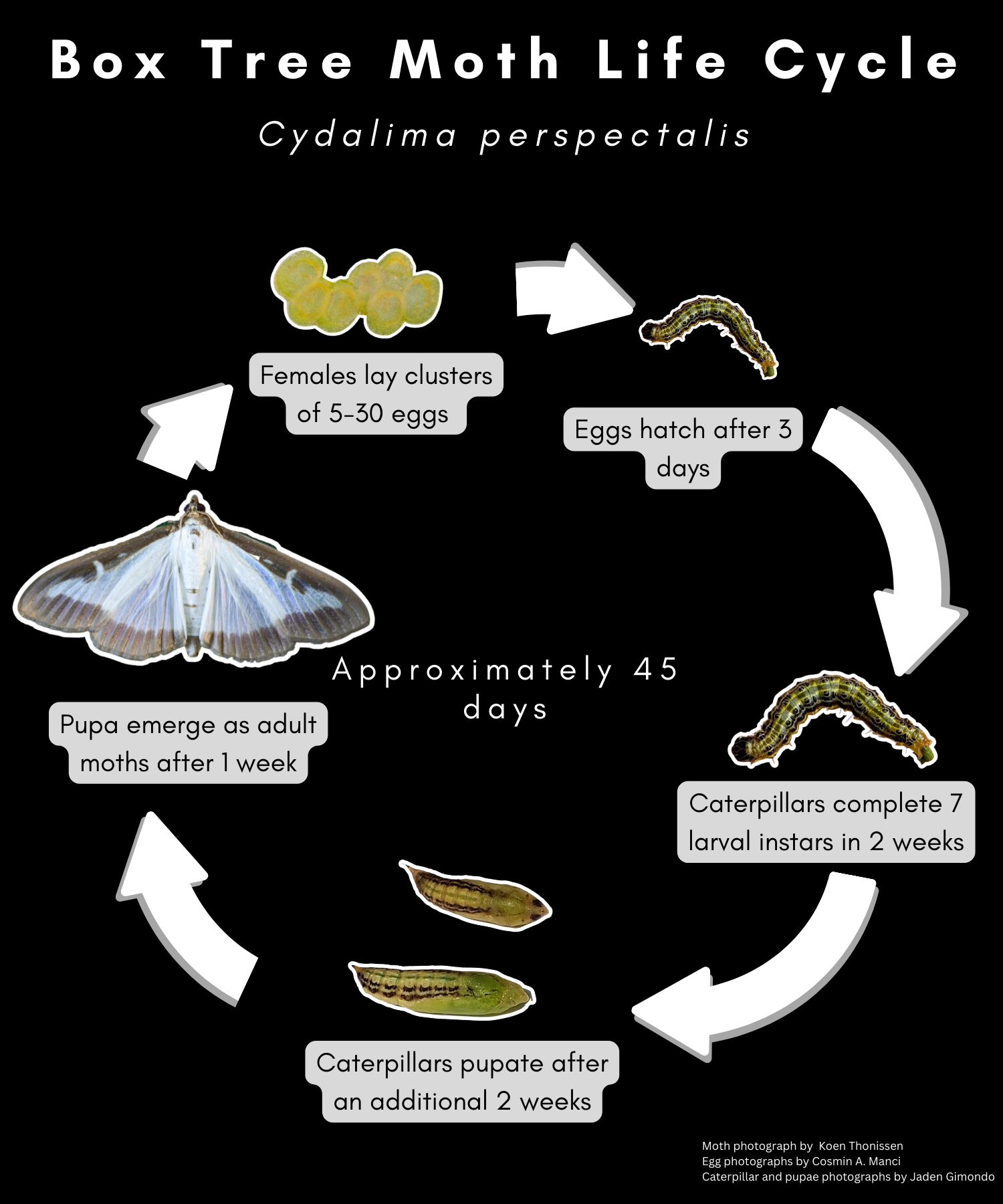
Signs
Box tree moth caterpillars only feed and reproduce on boxwood (Buxus spp.). First, you will see the defoliation of the boxwood leaves and the shrub's general yellowing and decline (Photo 3).
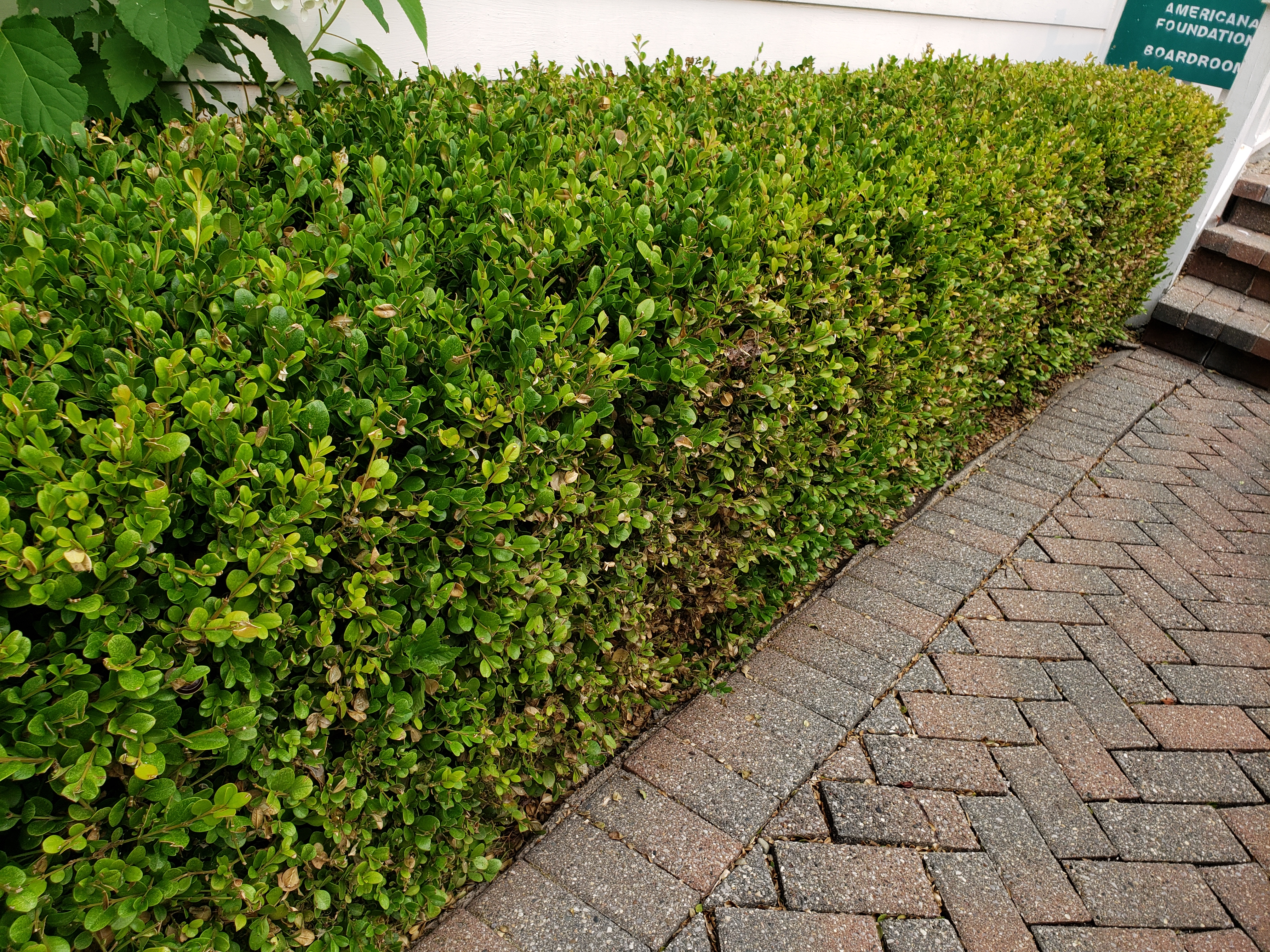
If you see signs of damage, check the boxwood plants for caterpillars (0.25 inches after the eggs hatch to 1.5 inches long when mature), which are lime green with black stripes and have white spots and hairs (Photo 4). Their distinctive shiny black heads are a significant identifying characteristic.
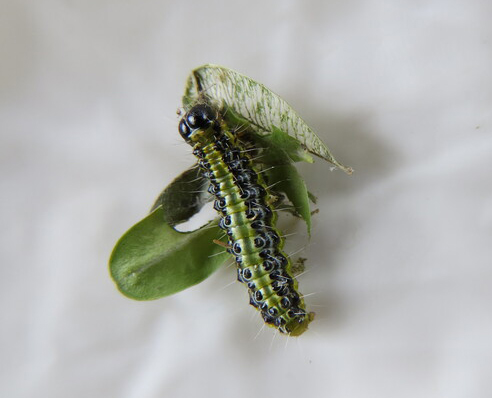
Box tree moths are excellent at hiding among the foliage; you may need to search deeper into the shrub. Look for sections of branches that are tightly clustered together where caterpillars may have formed a nest with webbing (Photo 5).
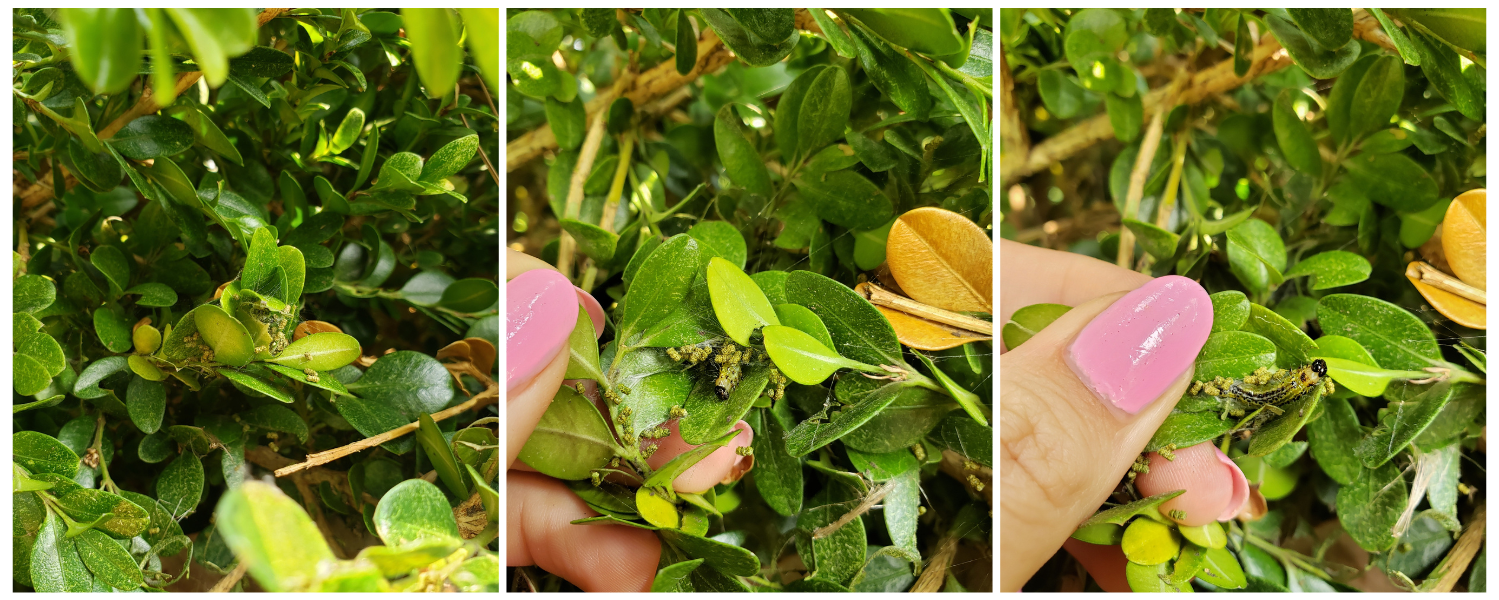
Small, lime green frass (insect poop) can be seen in the boxwood and on the ground surrounding the shrub. In more severe outbreaks, caterpillars eat the leaves and bark, leaving only the midribs of leaves (Photo 6).
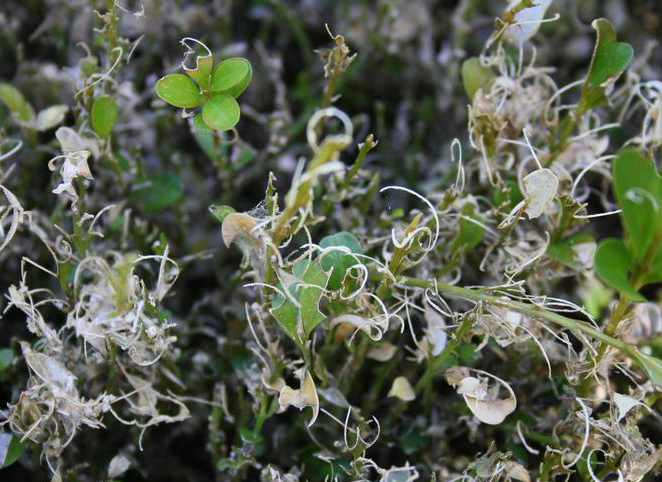
As their life cycle progresses, you may encounter pupae and caterpillars (Photo 7). Box tree moth pupae are typically green and often spun within a layer of webbing on the foliage of infested boxwood plants. These pupae are not encased in a cocoon but are somewhat protected by the webbing they create. This makeshift casing makes pupae hard to kill with contact insecticides.
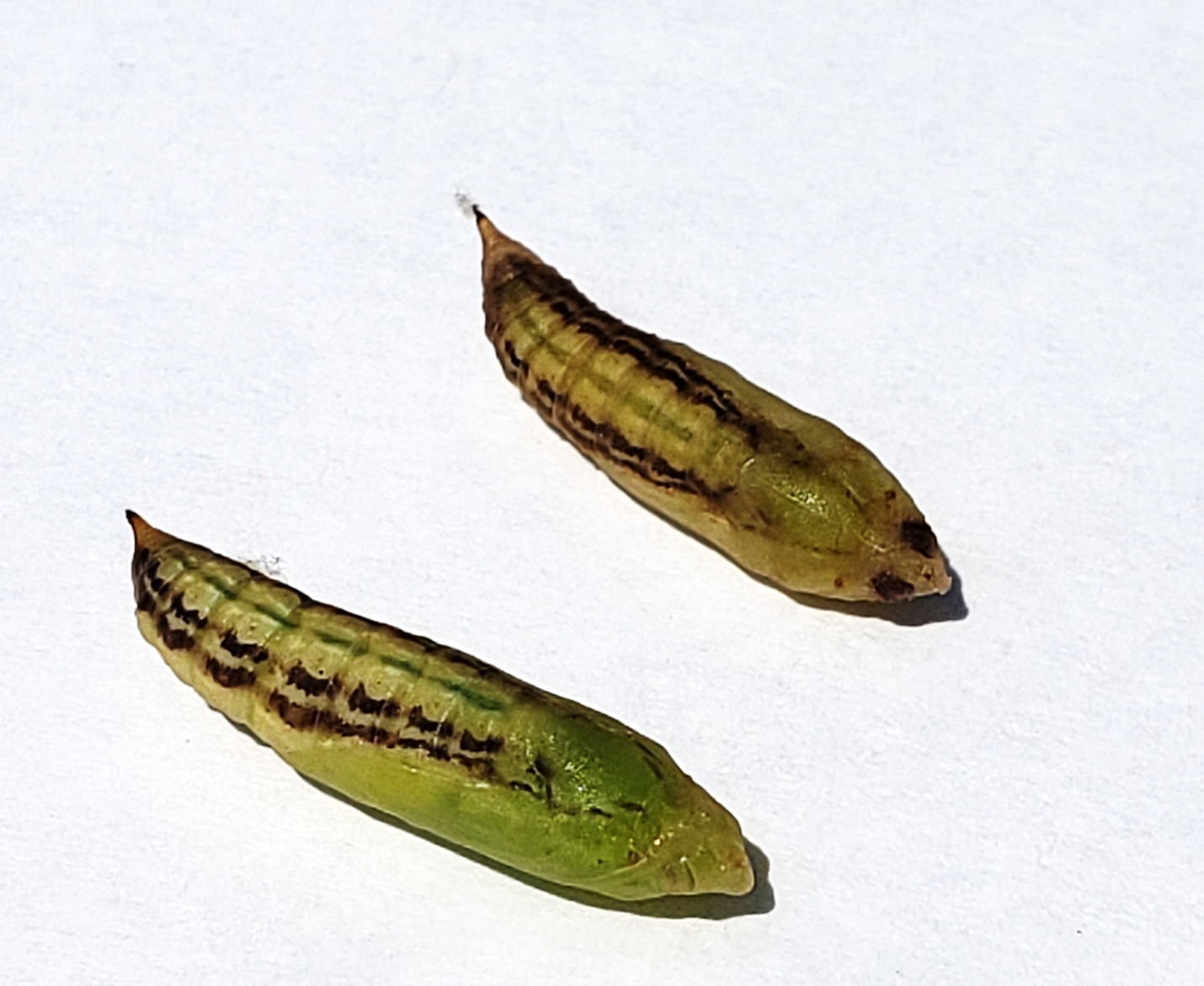
Active from June to October in Michigan, adult moths can exhibit either light (most common in North America) or dark coloration, both featuring distinctive white spots on their forewings. These moths typically have a wingspan of 1.6 to 1.8 inches (Photo 8).

Report a finding
If you find box tree moths in your boxwoods, taking photos and reporting them is crucial. Be sure to get a clear, close-up shot of the caterpillar, pupa, or moth. Submit your pictures to MDARD's Eyes in the Field with as much information as possible.
Protecting your boxwoods
If you are in or around the quarantine zone, you can use a preventative pesticide spray to protect your boxwoods or if you have a positive identification of box tree moths and need to treat them. We recommend in late July and early September an application of bifenthrin (several ready-to-use products available at the garden center) or any pyrethroid insecticide for homeowner use can be used to control all life stages. Pyrethroid insecticides are those where the active ingredient ends in thrin, for example, cyfluthrin, permethrin, resmethrin, cypermethrin, lambda-cyhalothrin and sumithrin.
Alternatively, homeowners can spray a Bacillus thuringiensis (Bt) product once every two weeks. However, Bacillus thuringiensis is not an effective control for larger caterpillars, eggs or adults. Bt is a bacterium that kills insects when ingested. There are subspecies of Bt that affect specific types of insects; kurstaki is the subspecies that specifically target caterpillar larvae. Look for product labels that say Bacillus thuringiensis subsp. kurstaki (Btk).



 Print
Print Email
Email

